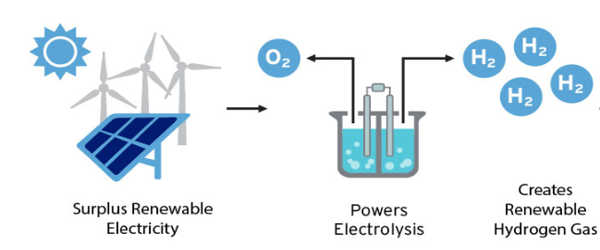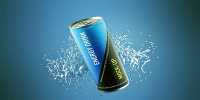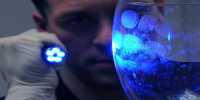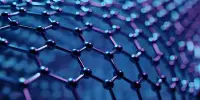According to researchers, the power of the sun, wind, and sea may soon be combined to produce clean-burning hydrogen fuel. The researchers incorporated water purification technology into a new proof-of-concept design for a seawater electrolyzer, which uses an electric current to separate hydrogen and oxygen molecules in water molecules.
According to a team of Penn State researchers, the power of the sun, wind, and sea may soon be combined to produce clean-burning hydrogen fuel. The researchers incorporated water purification technology into a new proof-of-concept design for a seawater electrolyzer, which uses an electric current to separate hydrogen and oxygen molecules in water molecules.
This new method for “seawater splitting” could make it easier to turn wind and solar energy into a storable and portable fuel, according to Bruce Logan, Kappe Professor of Environmental Engineering, and Evan Pugh University Professor.
The power of the sun, wind, and sea may soon combine to produce clean-burning hydrogen fuel, according to researchers. The team integrated water purification technology into a new proof-of-concept design for a seawater electrolyzer.
“Hydrogen is a fantastic fuel, but you have to create it,” Logan explained. “The only sustainable way to accomplish this is to use renewable energy derived from water. You must also use water that people do not want to use for other purposes, which is seawater. As a result, the holy grail of hydrogen production would be to combine seawater with wind and solar energy found in coastal and offshore environments.”
Despite its abundance, seawater is rarely used for water splitting. Unless the water is desalinated before entering the electrolyzer – an expensive extra step – the chloride ions in seawater degrade the equipment and leach into the environment.
To prevent this, the researchers used a thin, semipermeable membrane originally developed for water purification in the reverse osmosis (RO) treatment process. The RO membrane took the place of the ion-exchange membrane, which was commonly used in electrolyzers.
“The idea behind RO is that you put a really high pressure on the water and push it through the membrane and keep the chloride ions behind,” Logan said.

In an electrolyzer, seawater would be contained by the RO membrane rather than pushed through it. A membrane is used to help separate reactions that occur near two submerged electrodes connected by an external power source: a positively charged anode and a negatively charged cathode. When the power is turned on, water molecules begin to split at the anode, releasing tiny hydrogen ions known as protons and producing oxygen gas. After passing through the membrane, the protons combine with electrons at the cathode to form hydrogen gas.
With the RO membrane inserted, seawater is kept on the cathode side, and the chloride ions are too large to pass through the membrane and reach the anode, preventing chlorine gas production.
Logan, on the other hand, noted that in water splitting, other salts are intentionally dissolved in the water to help make it conductive. Salt ions can pass through the ion-exchange membrane, which filters ions based on their electrical charge. The RO membrane, on the other hand, does not.
“RO membranes prevent salt motion, but the only way to generate current in a circuit is for charged ions in water to move between two electrodes,” Logan explained. Because the movement of larger ions was limited by the RO membrane, the researchers needed to see if there were enough tiny protons moving through the pores to maintain a high electrical current.
“Basically, we had to demonstrate that what appeared to be a dirt road could be an interstate,” Logan explained. “We had to demonstrate that we could get a high current through two electrodes when there was a membrane between them that prevented salt ions from moving back and forth.”
The researchers tested two commercially available RO membranes and two cation-exchange membranes, a type of ion-exchange membrane that allows the movement of all positively charged ions in the system, in a series of experiments recently published in Energy & Environmental Science.
Each was evaluated for membrane resistance to ion movement, the amount of energy required to complete reactions, the production of hydrogen and oxygen gas, interactions with chloride ions, and membrane deterioration.
Logan explained that while one RO membrane proved to be a “dirt road,” the other outperformed the cation-exchange membranes. The researchers are still looking into why the two RO membranes differed so much.
“The concept has the potential to work,” he said. “We don’t know why these two membranes have been functioning so differently, but we’re going to figure it out.”
The National Science Foundation (NSF) recently awarded the researchers a $300,000 grant to continue their research into seawater electrolysis. Logan hopes that their research will play an important role in reducing global carbon dioxide emissions.
“Everyone in the world is looking for renewable hydrogen,” he said. “Saudi Arabia, for example, intends to construct a $5 billion hydrogen facility that will use seawater. For the time being, they must desalinate the water. They might be able to use this method instead.”
















